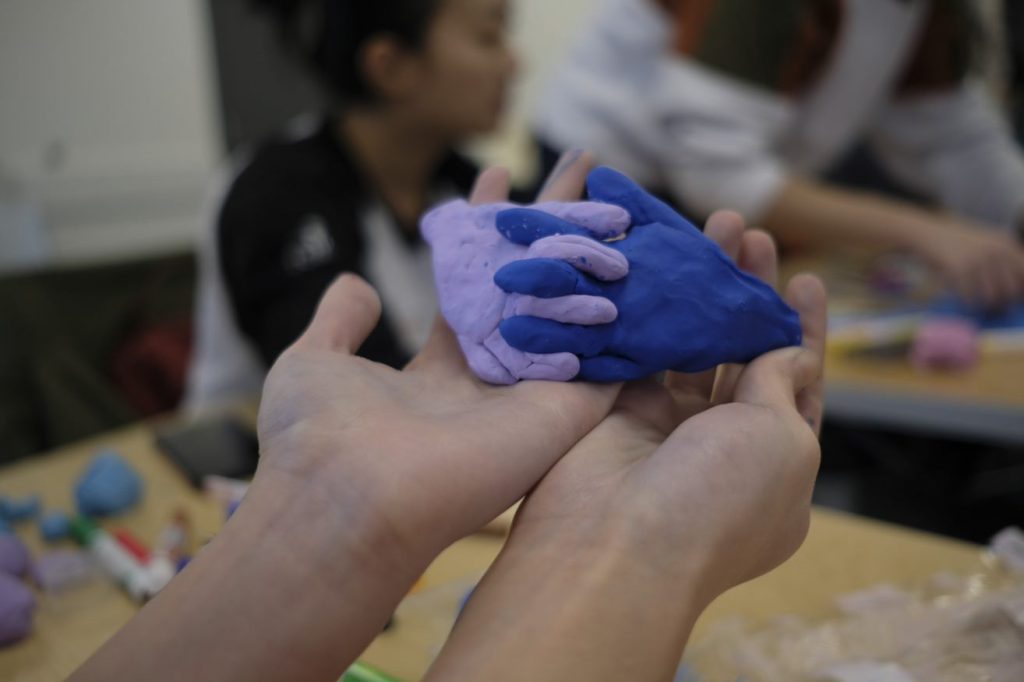
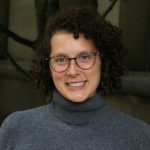
For Alternative Reading Week (ARW) last month, the Innovation Hub worked for three days with a group of students interested in design thinking, discussing design thinking principles, working through collaborative data analysis, and creating art to represent the themes we uncovered.
For this co-curricular project, we worked with data gathered by our Mental Health team, who conducted feedback groups on students’ experiences of mental health on campus for the Presidential and Provostial Task Force in September. In these feedback groups, students created six-word stories on mental health and discussed mental wellbeing at university. These anonymized stories were then taken up by ARW attendees, who used a Post-it note clustering technique called affinity programming to find recurring themes and insights and develop an art installation to inspire social change connected to mental health.
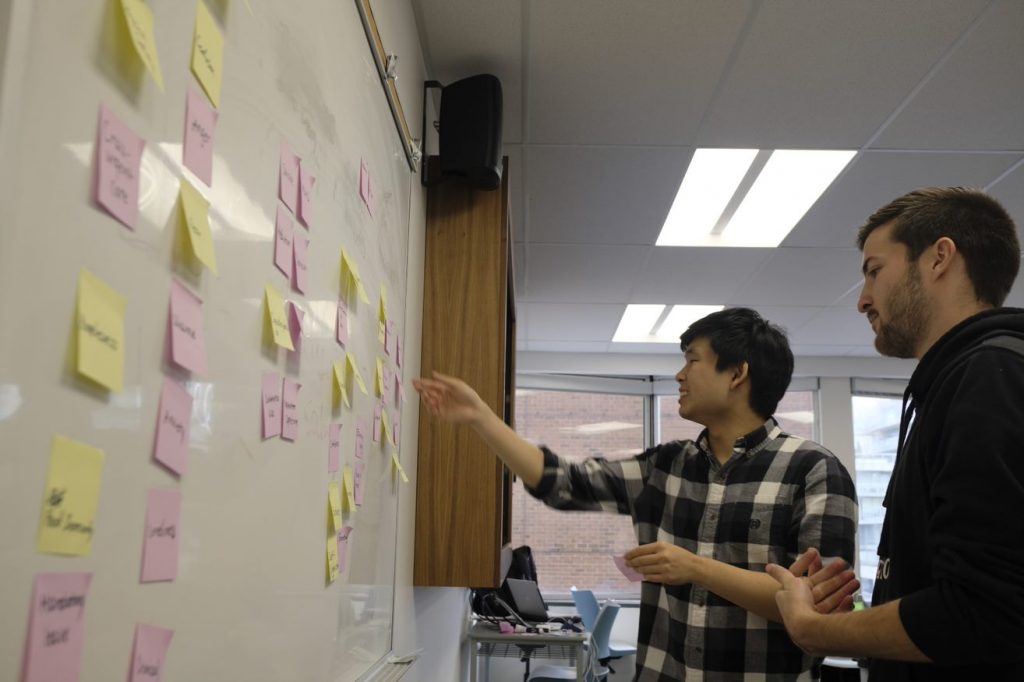
The ARW participants came to the program with several goals, including making connections with other students, building friendships, and strengthening their sense of community on campus. Many also wanted to embrace curiosity and learn new things, and to access—and build—an environment in which they can discuss and share resources around student mental health. Finally, some students participated to gain experience with data analysis.
The program intermixed experiential learning activities with lecture sprints on design thinking methodologies. Students had the chance to work with qualitative data, consider how we ‘do’ empathy in everyday contexts, and ideate and build, with craft materials, a space that would promote positive mental health in students. Finally, using the tags and themes they applied to the data, they worked together on an art installation to represent their insights.
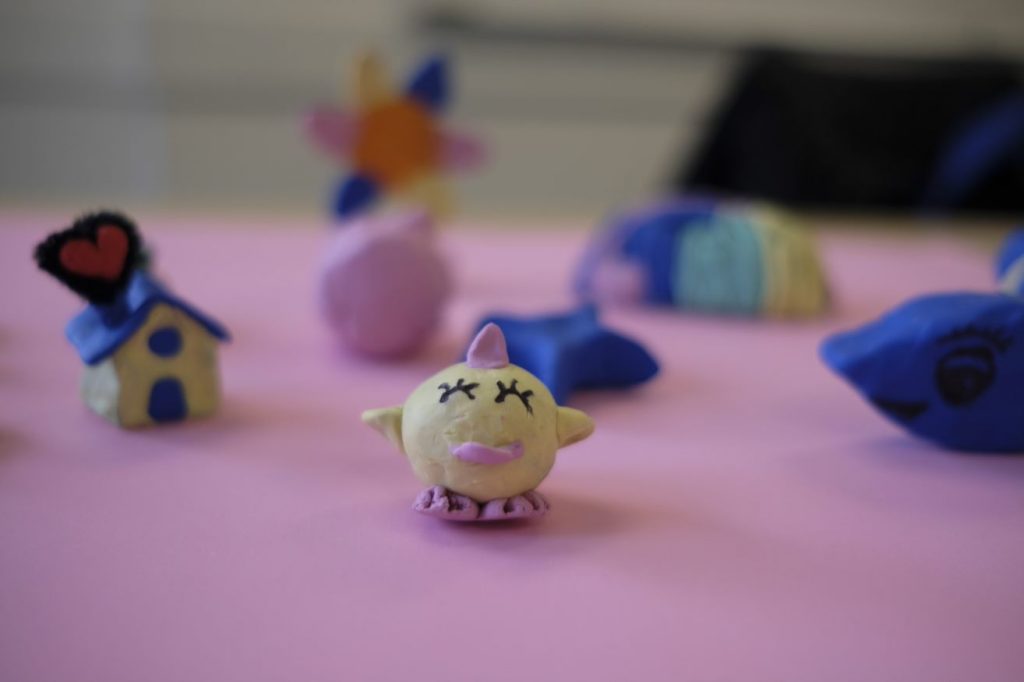
Students took many things away from ARW, which they shared with us on the final afternoon. We heard students say that reading the data from our mental health focus groups made them feel less alone in their experiences on campus. They also spoke of the significance of working in a team and getting to know each other by sharing stories and experiences in unstructured ways over meals and through art creation. Many students shared that they had newly discovered the ability to be artistic and that, while challenging, developing a visual narrative of the data was exciting. We’re inspired by the demonstrable connection built between participants in just three days.
These photos show the completed art piece! The flags mark different categories and themes from the six-word stories about mental health, and the figurines capture different elements of mental wellbeing. If you look closely, you can also see other six-word stories, written by participants to articulate their experiences at ARW. We’re still investigating places to display the work, so stay tuned!
If you’re interested in joining the Innovation Hub’s next short-term co-curricular program, keep an eye out for ARW Winter 2020. Until then, as the students’ art piece urges us, #StayCurious!
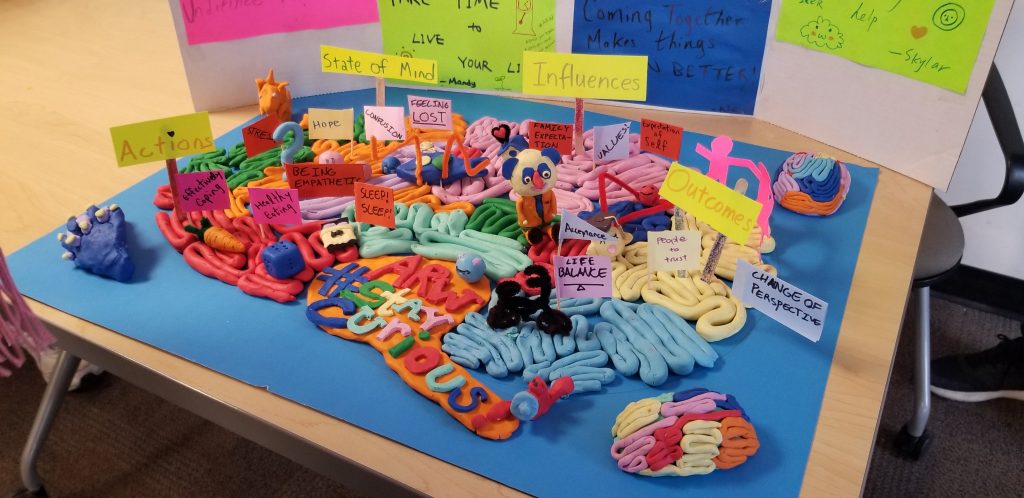
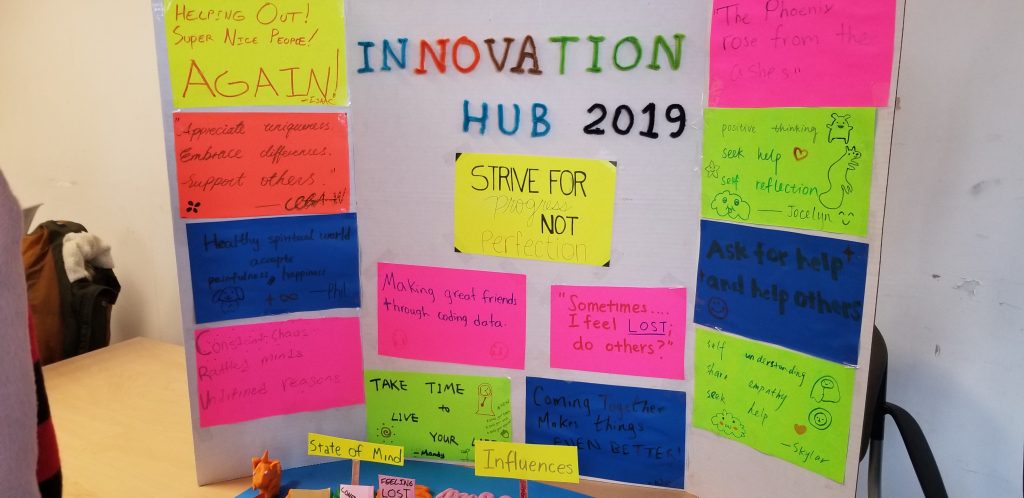
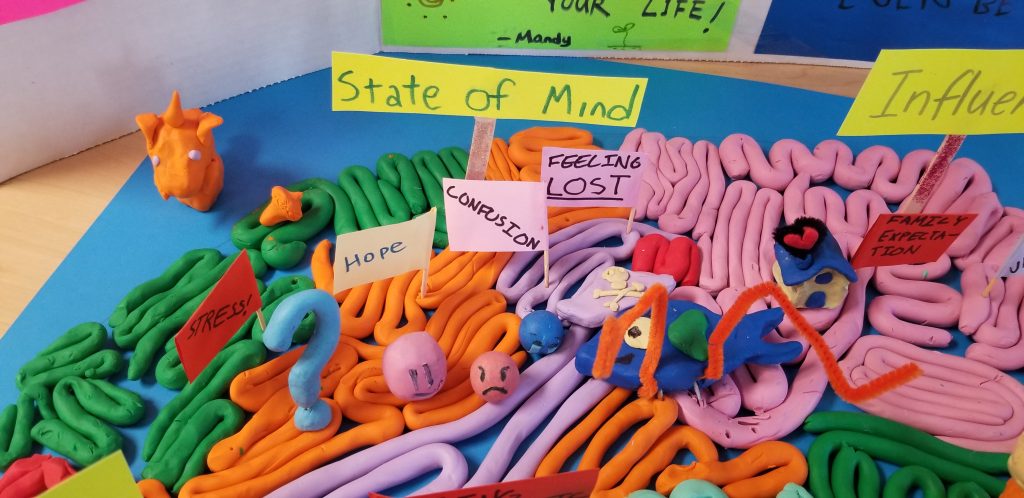
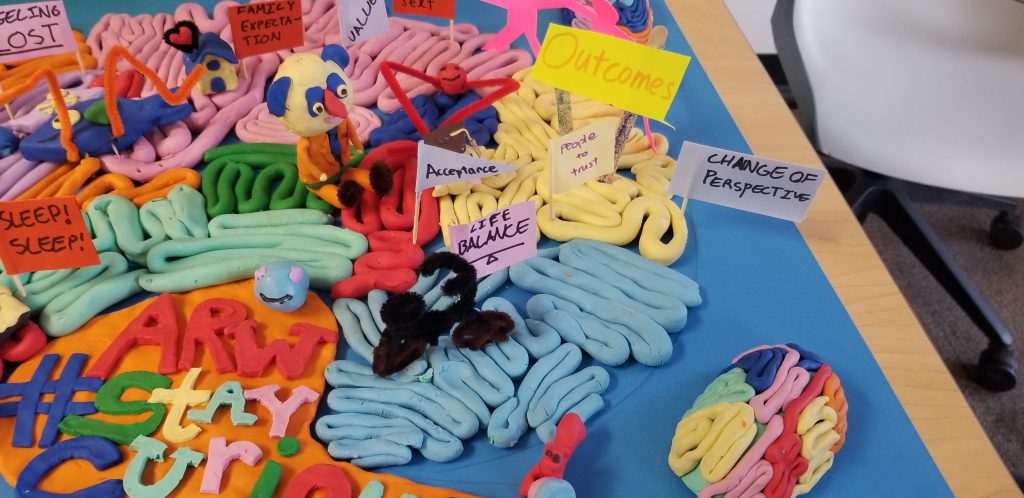
0 comments on “Alternative Reading Week: Art and Design with the Innovation Hub”